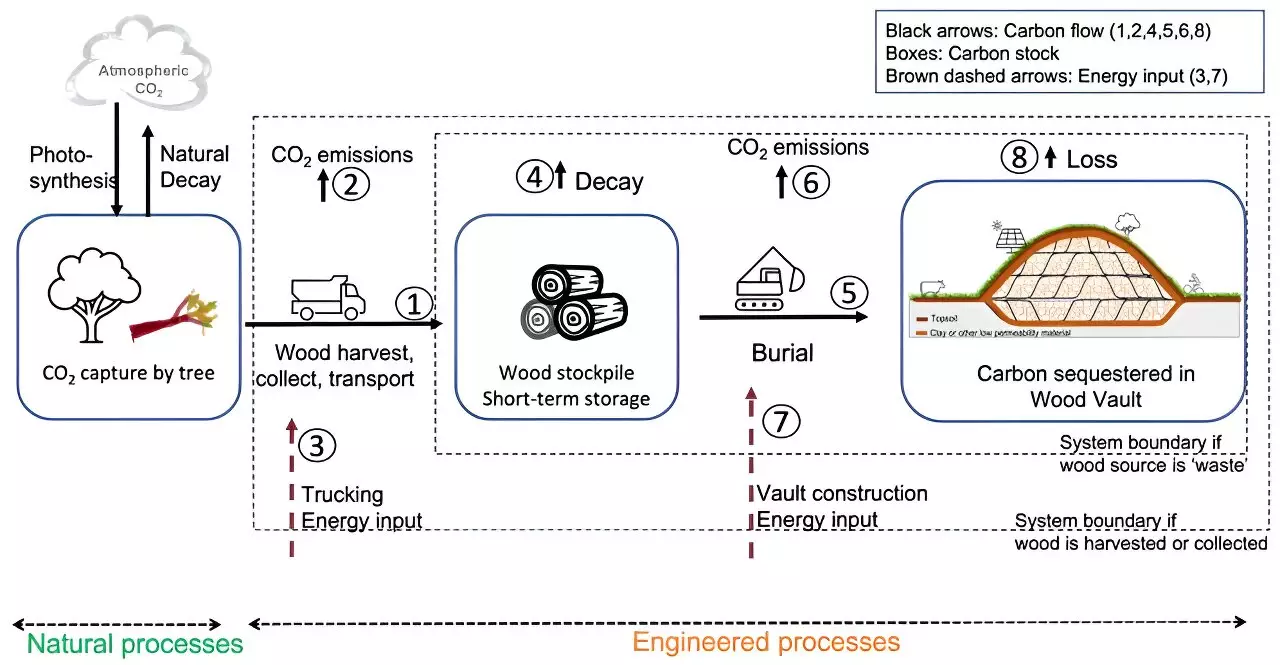As the effects of climate change become increasingly evident, the need to address greenhouse gas emissions has reached a critical point. Among these gases, carbon dioxide (CO2) is particularly devastating, contributing significantly to global warming. The scientific community has recognized that halting new emissions is not enough; it’s equally vital to remove existing carbon from the atmosphere. Recent findings by a multidisciplinary team at the University of Maryland, in collaboration with Canadian researchers, offer a new perspective on carbon sequestration—burying biomass as a low-cost method to trap carbon and mitigate climate warming.
In their groundbreaking study published in the journal Science, the researchers focused on a prehistoric log that had naturally been sealed beneath a layer of clay for nearly 3,800 years. This ancient specimen provided a compelling case supporting the hypothesis that burial can effectively sequester carbon. Analysis revealed that the log had retained an impressive 95% of the carbon it absorbed during its life, thanks to the preserving properties of the clay surrounding it. This finding highlights nature’s own method of carbon storage, providing a pathway that could be emulated on a larger scale today.
Cost-Effectiveness of Burial Methods
While numerous carbon capture strategies exist, many are prohibitively expensive, often costing between $100 to $300 per ton of CO2 removed. However, the Maryland team’s analysis indicates that burying biomass could potentially reduce this cost significantly, bringing it down to a range of $30 to $100 per ton. By utilizing available materials like logs, agricultural byproducts, or even dedicated biomass crops, this strategy presents a practical and economically viable alternative to more complex carbon sequestration technologies.
One of the most exciting aspects of this research is its scalability. The researchers estimate that if biomass burial methods were widely implemented, it could sequester up to 10 gigatons of carbon annually. To give context, this amount represents a substantial portion of the total eligible carbon emissions, suggesting that large-scale adoption could play a pivotal role in global climate strategies. The abundance of clay-rich soils worldwide further enhances the feasibility of this method, making it accessible to diverse geographical regions.
As humanity grapples with the urgent challenges posed by climate change, innovative solutions such as biomass burial present vital opportunities for progress. The evidence gathered from the University of Maryland research underscores not just the effectiveness of carbon sequestration through burial but also its potential affordability. Addressing the climate crisis requires creative thinking and actionable strategies, and burying biomass might just prove to be a crucial element in this endeavor. The study serves as a clarion call for further research and investment in this promising area of sustainability, paving the way for a cleaner, more stable environmental future.


Leave a Reply